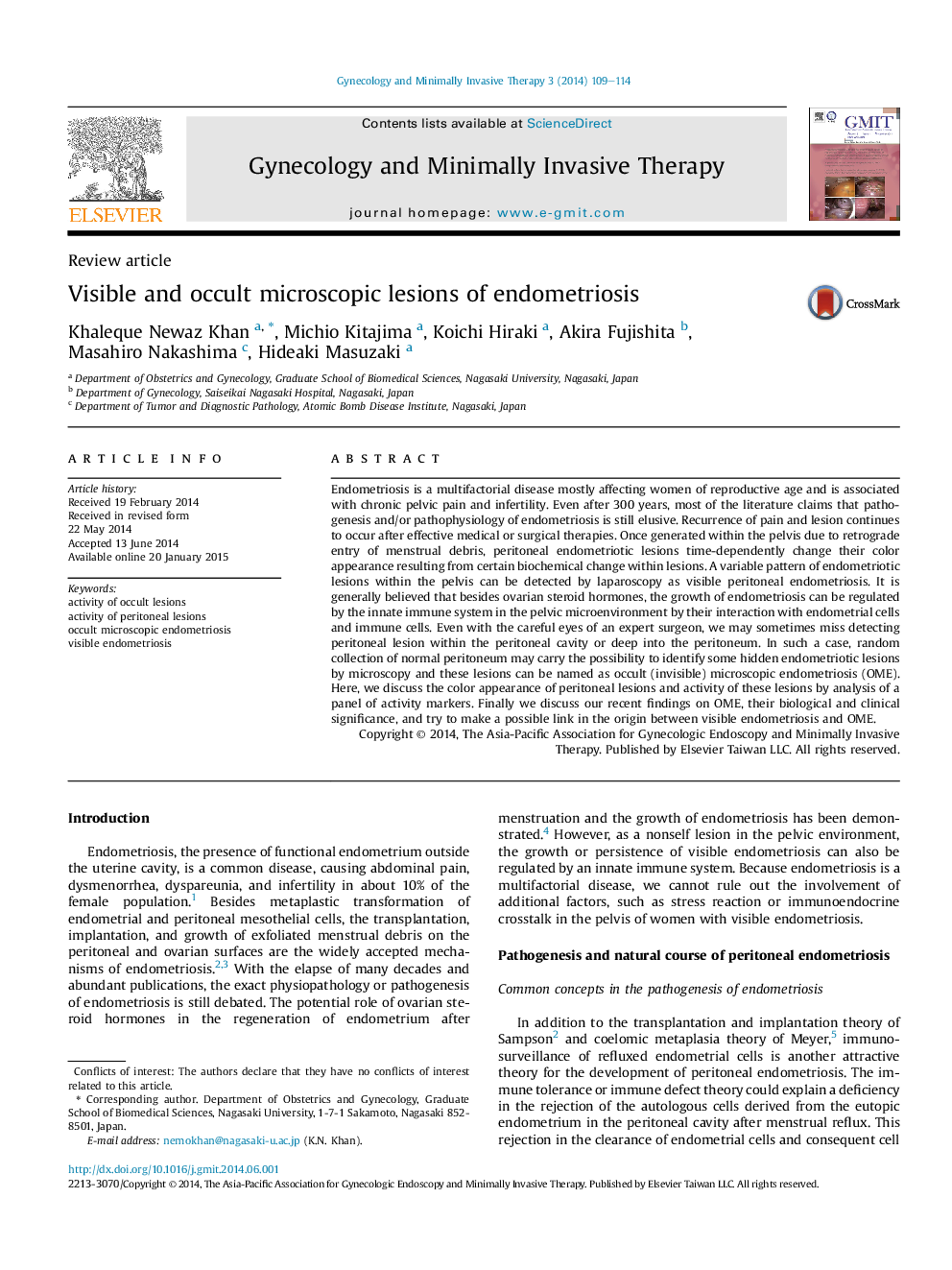| Article ID | Journal | Published Year | Pages | File Type |
|---|---|---|---|---|
| 3950562 | Gynecology and Minimally Invasive Therapy | 2014 | 6 Pages |
Endometriosis is a multifactorial disease mostly affecting women of reproductive age and is associated with chronic pelvic pain and infertility. Even after 300 years, most of the literature claims that pathogenesis and/or pathophysiology of endometriosis is still elusive. Recurrence of pain and lesion continues to occur after effective medical or surgical therapies. Once generated within the pelvis due to retrograde entry of menstrual debris, peritoneal endometriotic lesions time-dependently change their color appearance resulting from certain biochemical change within lesions. A variable pattern of endometriotic lesions within the pelvis can be detected by laparoscopy as visible peritoneal endometriosis. It is generally believed that besides ovarian steroid hormones, the growth of endometriosis can be regulated by the innate immune system in the pelvic microenvironment by their interaction with endometrial cells and immune cells. Even with the careful eyes of an expert surgeon, we may sometimes miss detecting peritoneal lesion within the peritoneal cavity or deep into the peritoneum. In such a case, random collection of normal peritoneum may carry the possibility to identify some hidden endometriotic lesions by microscopy and these lesions can be named as occult (invisible) microscopic endometriosis (OME). Here, we discuss the color appearance of peritoneal lesions and activity of these lesions by analysis of a panel of activity markers. Finally we discuss our recent findings on OME, their biological and clinical significance, and try to make a possible link in the origin between visible endometriosis and OME.
